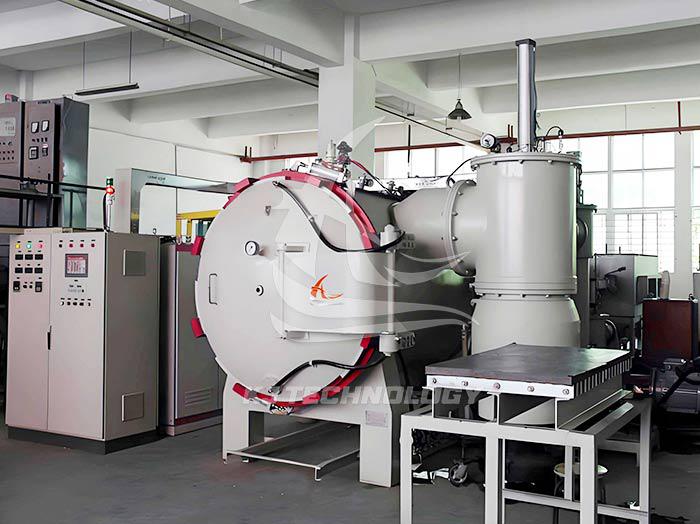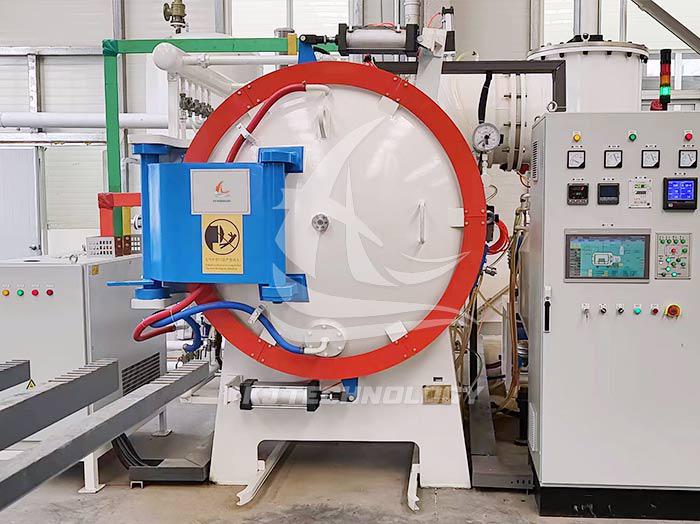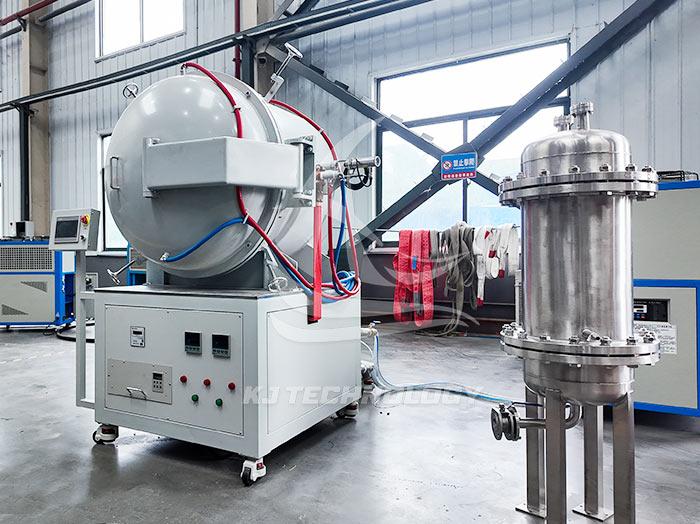What experiments can be conducted using a graphite furnace in the laboratory?
 07-22-2025 Author: KJ technology
07-22-2025 Author: KJ technology
Laboratory graphite furnaces are widely used in fields such as materials science, chemical analysis, semiconductor manufacturing, and energy research due to their high temperature stability, vacuum or inert atmosphere control capabilities, and precise temperature control systems. The following are the main types of experiments and specific application scenarios:
1. Material synthesis and modification experiment
Graphitization treatment
Experimental objective: To transform carbon fiber, carbon/carbon composite materials, asphalt based carbon materials, etc. into high crystallinity graphite structures to enhance material strength, conductivity, and high temperature resistance.
Typical process: Under the protection of inert gas (such as argon), heat the material to 2000-3000 ℃ and hold for several hours to convert amorphous carbon into graphite crystals.
Application areas: aerospace (rocket nozzles, brake pads), nuclear industry (nuclear reactor structural materials).
Ceramic sintering
Experimental objective: To achieve densification of ceramic materials, eliminate pores, and improve mechanical properties through high temperature and high pressure.
Typical process: Ceramic powders such as silicon carbide (SiC) and silicon nitride (Si ∝ N ₄) are pressed into shape, heated to 1600-2000 ℃ in a vacuum or nitrogen atmosphere, and subjected to pressure (such as hot pressing sintering).
Application areas: Electronic packaging (high thermal conductivity ceramic substrates), cutting tools (ceramic blades).
Metal purification and alloying
Experimental objective: To remove impurities (such as oxygen and hydrogen) from metals in vacuum or inert atmosphere, or to synthesize high-purity alloys.
Typical process: Heating metal raw materials (such as titanium and zirconium) above their melting point, using a vacuum environment to reduce impurity partial pressure, and achieving evaporation purification; Alternatively, special alloys such as nickel based high-temperature alloys can be prepared by melting and mixing different metals.
Application areas: aerospace (turbine blades), medical devices (titanium alloy implants).
2. Chemical Analysis and Element Detection Experiment
Atomic Absorption Spectroscopy (AAS) Analysis
Experimental objective: Quantitatively detect metal elements (such as lead, cadmium, copper) in the sample.
Typical process:
Ashing stage: Heat the sample to 500-800 ℃ to remove organic matter and retain inorganic components.
Atomization stage: Quickly raise the temperature to 2000-3000 ℃ to convert metal elements into gaseous atoms, and quantitatively analyze them by absorbing specific wavelength light signals.
Application areas: Environmental monitoring (heavy metal detection in water quality), food testing (pesticide residue analysis).
Thermogravimetric Differential Scanning Calorimetry (TG-DSC) Combined Use
Experimental objective: To analyze the mass changes (such as decomposition and oxidation) and thermal effects (such as melting and phase transition) of materials during the heating process.
Typical process: Heat up to the target temperature at a rate of 10-20 ℃/min in an inert gas or air atmosphere, and simultaneously record the mass change and heat flow curve.
Application areas: research on battery materials (thermal stability analysis of lithium-ion battery cathode materials), development of polymer materials (research on polymer degradation mechanisms).
3. Experiment on Preparation of Semiconductor and Electronic Materials
Silicon wafer epitaxial growth
Experimental objective: To deposit a layer of high-purity silicon or compound semiconductor (such as gallium arsenide) on the surface of a single crystal silicon wafer to prepare high-performance semiconductor devices.
Typical process: Heat the silicon wafer to 1000-1200 ℃ in a hydrogen or vacuum environment, and grow epitaxial layers through chemical vapor deposition (CVD) technology.
Application areas: Integrated circuit manufacturing (CPU, GPU chips), optoelectronic devices (solar cells, LEDs).
Preparation of Graphene
Experimental objective: To grow single-layer or multi-layer graphene on copper foil or nickel substrate by chemical vapor deposition (CVD) method.
Typical process: Heat the substrate to 800-1000 ℃, introduce carbon source gas such as methane, decompose and deposit carbon atoms at high temperature, and form graphene film.
Application areas: flexible electronics (wearable device sensors), transparent conductive films (touch screens).
4. Energy Materials Research Experiment
Synthesis of Positive Electrode Materials for Lithium ion Batteries
Experimental objective: To prepare high-capacity and long-life lithium-ion battery cathode materials (such as lithium cobalt oxide and lithium iron phosphate).
Typical process: Mix lithium, cobalt, or iron sources, heat to 700-900 ℃ in an oxygen or air atmosphere, and synthesize the target compound through solid-state reaction.
Application areas: electric vehicles (power batteries), consumer electronics (mobile phone, laptop batteries).
Development of hydrogen energy materials
Experimental objective: To investigate the hydrogen absorption/desorption properties of hydrogen storage materials such as magnesium based alloys and carbon nanotubes.
Typical process: Heat the material to 200-400 ℃ in a vacuum or hydrogen atmosphere, and monitor the hydrogen absorption rate through pressure changes; Or analyze the hydrogen release temperature through temperature desorption (TPD) technology.
Application areas: hydrogen energy storage (vehicle mounted hydrogen storage tanks), fuel cells (proton exchange membrane fuel cell catalysts).
5. High temperature physical property testing experiment
High temperature tensile/compression test
Experimental objective: To test the mechanical properties of materials at high temperatures, such as tensile strength and yield strength.
Typical process: Place the sample in a graphite furnace, heat it to the target temperature (such as 1000 ℃), apply stress through stretching or compression, and record the stress-strain curve.
Application areas: aerospace (high-temperature strength testing of engine blades), nuclear industry (research on creep performance of nuclear fuel cladding materials).
High temperature conductivity test
Experimental objective: To measure the electrical resistivity or conductivity of materials at high temperatures.
Typical process: Place the sample in a graphite furnace, heat it to the target temperature, measure the resistance using the four probe method or van der Waals method, and calculate the conductivity.
Application areas: power transmission (research on high-temperature superconducting materials), electronic devices (development of high-temperature sensors).








